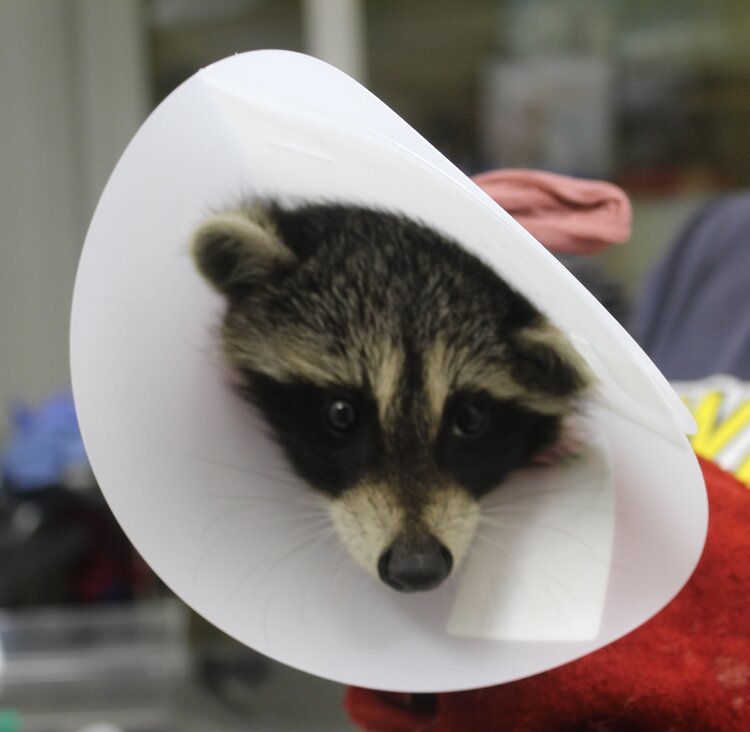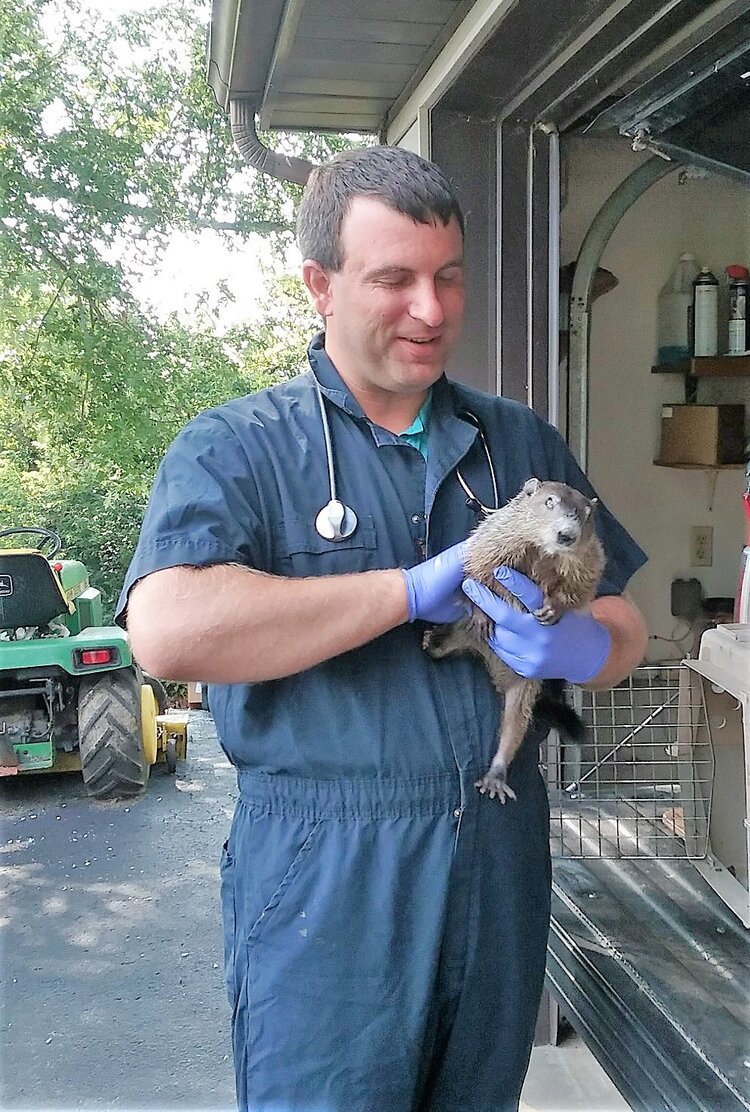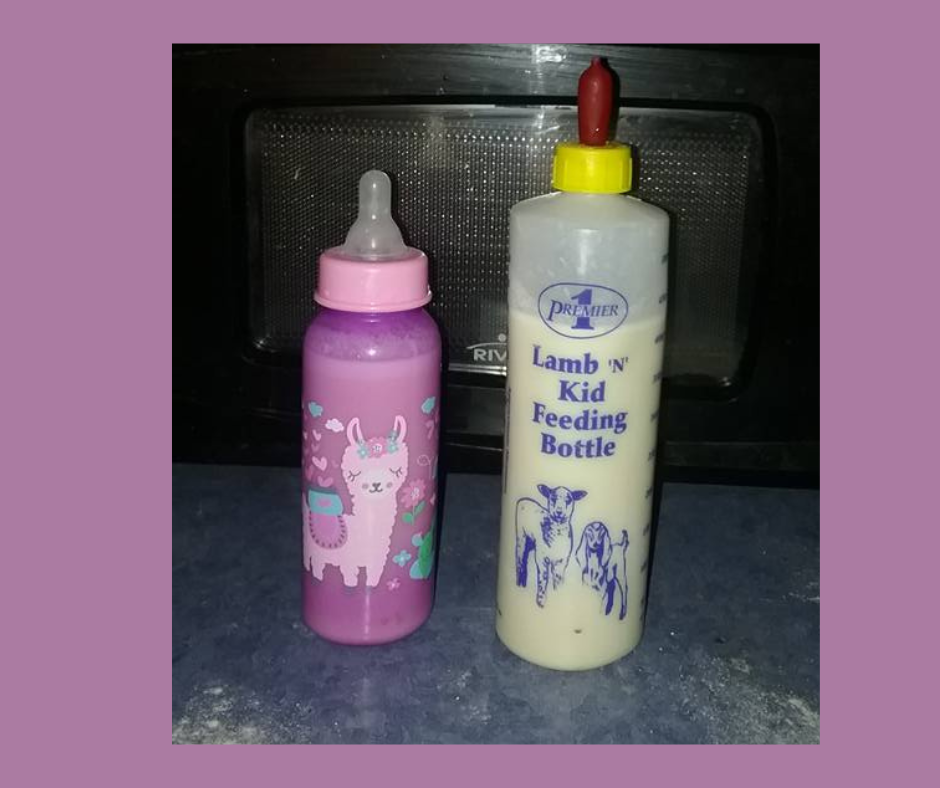Wildlife rehabilitation is the rescue and care of injured and orphaned wildlife. Wildlife rehabilitators play an important role as conservationists and humanitarians.
Are you interested in becoming a Licensed Wildlife Rehabilitator? Keep reading as I am going to give you first-hand knowledge based on thirteen years of personal experience on what it takes to become a licensed wildlife rehabilitator.
WHAT IS WILDLIFE REHABILITATION?
Wildlife rehabilitation is the rescue and care of injured and orphaned wildlife. Primarily this focuses on neonates and baby wildlife but it may also include juveniles and adults. The goal of rehabilitation is to put the animal back into the wild when it’s ready to live on its own.
Wildlife Rehabilitators play an important role as conservationists and humanitarians. Rescued wildlife often have human inflicted injuries that may be caused by being hit by a car or lawnmower, the parents being trapped or shot, or habitat destruction.
They may be displaced or injured due to floods and fires occurring in their habitat.
The rehabilitator provides medical care, feedings, as well as natural experiences so that animals can be returned to their native environment.
The National Wildlife Rehabilitation Association defines wildlife rehabilitation as the professional care given to sick, injured, and orphaned wild animals with the ultimate goal of having them be returned to their natural habitat.
Wildlife rehabilitators must arrange for veterinary care and provide appropriate housing.
WHY DOES WILDLIFE NEED TO BE REHABILITATED?
Research shows that the majority of injured, ill, and orphaned wild animals handled by rehabilitators are suffering not because of "natural" occurrences, but because of human intervention -- some accidental, some intentional, many preventable. Injuries due to cars, mowers, firearms, traps, kids throwing stones, poisons, oil spills, pets, can be life-threatening.
Rehabilitators treat injuries in these animals by either caring for them until they can be released or having them humanely euthanized.
Rehabbers seek to educate the public on how to prevent these problems and work with citizens having wildlife/human conflicts. Some wildlife rehabilitators conduct education programs for the public.
Check out my wildlife rehabilitation book series! Available in paperback and Kindle on Amazon!
THEY ARE NOT PETS
Wildlife rehabilitation is not an attempt to turn wild animals into pets. Animals remain in captivity only until they are able to live independently in the wild and then they are released. In fact, we have minimal contact with our babies. It’s important that they develop appropriate fear of humans, dogs, and cats in order for them to survive.
Wild animals do not make good pets. In addition, it is against the law to possess a wild animal in many other states without a permit. Check your state regulations.
The video below will show you step by step how to put together a car kit in case you come along an injured or orphaned baby animal.
Subscribe for great videos on organic gardening and wildlife @foxruneec
WHAT HAPPENS FIRST?
Typically what happens is Joe Citizen finds an injured or presumed orphaned wild baby. They want to locate someone to help this baby. Often they will contact the local police or their local animal shelter who should direct them to a local rehabilitator.
In most states, wildlife rehabilitators are licensed under the direction of the Department of Fish and Wildlife or the Department of Natural Resources.
If you are trying to locate a licensed rehabber you can check out the map on the NWRA website for state resources.
You can also use the location APP by Animal Help Now anywhere in the USA. Download it to your phone so it’s available when you need it.
The rehabilitator will ask the finder questions to find out if the baby does need intervention.
A quick note here if you are Joe Citizen! These questions are very important. They let the rehabber understand the circumstances and make a professional decision.
You may be asked to send a picture. You may be told to put the animal back. Please comply.
WHAT SKILLS DO WILDLIFE REHABILITATORS NEED?
In many ways, wildlife rehabilitators are like nurses. We provide medical care to distressed animals. Animals in need of rescue come to us with injuries, separation anxiety, and parasites.
For the most part, these animals are not happy or healthy. They are in crisis.
An important part of your job is compassion for both the animal and the finder. Finders often make mistakes and need education and guidance.
Wildlife rehabilitation is not a solitary job (sorry!). Working with the public and providing a calm resource when they are panicking or need some helpful advice due to a nuisance issue such as squirrels living in the attic or foxes killing chickens.
Along with compassion, a good rehabber has a working knowledge of first aid and triage. Wildlife Rehabbers work with a veterinarian to establish good medical practices. And most important for their safety and the animal's well-being rehabbers need to have an understanding of zoonoses - animal to people diseases.
In addition, wildlife rehabbers often need to be skilled in basic carpentry or have volunteers that are in order to design and build appropriate enclosures. Having a good understanding of the species habitat is important and you need to manage all that waste.
According to the International Wildlife Rehabilitation Council, on average, rehabilitators can expect to spend 35% of their time caring for animals, 35% working with the public, 15% handling administrative tasks, and 15% managing the facility.
SKILLS YOU NEED
Administer fluids
Give injections
Wound care
Basic body evaluation with temperature, weight, and skin condition
Humane restraint and capture strategies
Knowledge of providing a safe and clean enclosure
Knowledge of feeding and nutrition for the species under your care
Ability to perform humane euthanasia
Dealing with people on the phone
Carpentry skills to build enclosures
Watch my video to hear about my personal experience and how to become a wildlife rehabilitator. Check out my YouTube @foxruneec
Passion
My personal belief is along with skills you must have passion.
I have loved animals my whole life and was lucky enough to grow up on a farm where we had lots of pets, horses, and livestock. I grew up in the 1970s and early ’80s before wildlife rehabilitation laws existed.
People were always bringing me wild and domestic animals that had been hurt or orphaned. My parents had a wonderful vet who was always willing to give me guidance and help me with my “babies”.
I became a science and special education teacher and a passionate environmentalist. It was only a matter of time before that morphed into becoming a licensed wildlife rehabilitator.
Do you have a similar story to tell? Then you have a passion for helping animals.
Burn Out and Compassion Fatigue
Wildlife rehabilitation can be stressful, time-consuming, and emotionally taxing. Compassion fatigue is a term used in health care professions. It comes from being exposed to trauma that comes from others, in this case, injured or orphaned wildlife. It can often be an emotional roller coaster.
Before you even begin wildlife rehabilitation you need to understand the importance of priorities and making sure you take time for self-care.
Dr. Glaza examining our groundhog Ponyo. Photo by Ame Vanorio.
WORK WITH A VET
It is very important to have a good working relationship with your veterinarian. Some states even require that your vet sign off on your paperwork in order to show medical commitment.
Finding a vet that will see wildlife can be tricky. Not all vets will see wildlife or exotic animals in their practice. Furthermore, while some vets will give a discount, vet care can easily be your highest expense.
Some medical procedures you can do yourself and your vet may be willing to give you some training to address common but minor conditions. However, such things as X-rays, setting a bone, repairing a severely crushed turtle shell, stitches, or performing an amputation requires a veterinarian.
VOLUNTEERS
Most rehabbers are volunteers. A few persons may also be wildlife biologists and work for the state parks or the Department of Fish and Wildlife. Many wildlife rehabilitators have part or full-time jobs to support their passion and/or their families.
In addition, many rehabbers pay for their expenses out of their own pockets. You can ask for donations or do fundraisers as long as you are transparent.
You may decide to go through the process to become a non-profit which allows your donors to take a tax credit. It also lets you write grant applications, although there are not many grant opportunities for wildlife rescue compared to the rescue of domestic animals.
Read my blog Developing A Sustainable Business Model For Your Wildlife Rehab: AKA Love Doesn't Pay The Bills
Wildlife rehabilitators do not have to have a college degree. They come from all different walks of life. What brings us together is compassion for animals and a desire to help them.
Volunteering for a licensed wildlife rehabilitator is a good way to find out if you want to become a rehabber. Many wildlife rehabilitators accept volunteers. Finding a mentor is a good idea.
Our former volunteer, Lauren has gone on to have her own wildlife rehabilitation center. Check out Enchanted Forest Wildlife Rescue of Kentucky on Facebook. Photo by Ame Vanorio
CAREERS
Some persons are wildlife rehabilitators as part of their job. Jobs such as wildlife biologists, environmental educators, zookeepers, or park rangers may include an aspect of wildlife rehabilitation. These jobs require a college degree in biology, environmental science, or something similar.
Having a wildlife rehabilitation license or experience may help you get a job and set you apart. Some veterinary techs specialize in exotic animals including wildlife.
Some people find work for larger non-profit wildlife sanctuaries or rehab centers that are able to offer paid positions.
Others may work for government or non-profits that assist during natural disasters such as oil spills, hurricanes, or wildfires.
PROFESSIONAL LICENSE OR PERMIT
Why bother to get a professional license or permit? I can take care of baby animals without it. Sadly I hear this a lot.
There are many people who rehab wildlife illegally. Those people can receive fines or jail time if caught. However, the real tragedy is that in many areas the officers will often kill the animals and not try to place them with a licensed professional. I saw this happen several times in Kentucky.
Wildlife Rehabilitation is a profession. Just like Nursing or Teaching (which we do) we need to maintain certain standards. Having a license not only helps you comply with the law but also shows people you take your job seriously.
Are you ready for some in-depth information on what you need to be a wildlife rehabilitator? Check out my book! Available on Kindle and Paperback.
How Do I GET LICENSED TO BECOME A WILDLIFE REHABILITATOR?
Each state has procedures you must follow to become a wildlife rehabilitator. These will be listed either under the state office for fish and wildlife or the state’s department for natural resources. Common procedures are taking a test, course, or getting a number of volunteer hours under a licensed rehabilitator.
Many states require the rehabber to take the class The Basics in Wildlife Rehabilitation from IWRC plus classes for continuing education to become licensed.
This class is offered across the United States at various times. They are typically hosted by a college or local wildlife group. You just have to check into the International Wildlife Rehabilitation Council website to see what is scheduled.
NEW ONLINE CLASS
IWRC has now announced that they will offer the Basics class online. This version of the course will be a hybrid. That means they will have a combination of pre-recorded lectures and live discussions via Zoom.
There are courses being offered around the country and they ask that you sign up for the online class in your state. Also, most of the labs are online as well however the Illinois class has an in-person lab.
Please read the description carefully to make sure this class format will work for you. IWRC states that you must attend all four sessions and a lab to achieve a passing grade
The same charges apply. You will be receiving a lab kit as well as textbooks. However, you need to obtain two cadavers: 1 mammal such as a rat or rabbit, and 1 avian carcass such as a pigeon or chicken. These can be obtained from science supply stores or even a local farmer.
If you do not have the funds for a class email the IWRC and ask about scholarship monies. They do sometimes have financial aid.
Below are some of the classes they currently have listed on their website. Keep checking because they continually add new locations.
Upcoming ONLINE IWRC Classes. You must go through their website to enroll
09/23/24 – 09/29/24 | Eastern Time Zone | Lab Schedule | Instructor: Halley Buckanoff | Contact samantha@theiwrc.org to be placed on waitlist
10/07/24 – 10/13/24 | Central Time Zone | Lab Schedule | Instructor: Jan Shadick | Registration Deadline: 09/22/24
10/21/24 – 10/27/24 | Mountain Time Zone | Lab Schedule | Instructors: Kim Blomme, Lisa Tretiak | Registration Deadline: 10/06/24
11/04/24 – 11/10/24 | Pacific Time Zone | Lab Schedule | Instructors: Sherri Cox, Lisa Tretiak | Registration Deadline: 10/20/24
Registrations may close before the listed deadline if maximum capacity is reached.
Upcoming IN-PERSON IWRC Classes. You must go through their website to enroll
09/07/24 – 09/08/24 | Cabuya, Costa Rica | Host: Wild Sun Rescue Center | Instructor: Halley Buckanoff | Registration Deadline EXTENDED: 09/02/24
10/12/24 – 10/13/24 | Eaton Rapids, Michigan | Instructor: Lloyd Brown | Registration Deadline: 09/25/24
10/19/24 – 10/20/24 | Davie, Florida | Instructor: Lloyd Brown | Registration Deadline: 10/02/24
10/26/24 – 10/27/24 | Pasadena, California | Instructor: Debbie Sykes | Registration Deadline: 10/09/24
11/02/24 – 11/03/24 | Louisville, Kentucky | Instructor: Rebecca Michelin | Registration Deadline: 10/16/24
11/04/24 – 11/05/24 | Navarre, Florida | Instructor: Kelli LeVan | Registration Deadline: 10/16/24
11/13/24 – 11/14/24 | Newark, Delaware | Instructor: Hilary DeVries | Registration Deadline: 10/27/24
Registrations may close before the listed deadline if maximum capacity is reached.
Certified Wildlife Rehabilitator
The IWRC also offers a professional certificate that seeks to raise the minimum standard of knowledge and care for wildlife rehabilitation around the world.
This consists of taking an exam to show you have an advanced level of knowledge and professionalism.
“Certified Wildlife Rehabilitator (CWR) is a designation which recognizes current and prospective wildlife rehabilitators who achieve a higher standard of wildlife care through academic excellence. Completion of the CWR certificate is not equivalent to licensure as a wildlife rehabilitator.”
Want To Know More On What To Do When You Get a Sick Animal?
Symptoms, treatments, prevention, and supportive care is discussed as well as managing stress and pain. I discuss working with a vet, vaccination of wildlife, wearing PPE, euthanasia, and some of my own personal experiences. Whether you're an experienced rehabber or just getting started this book is an indispensable resource that will take your rehabilitation practices to the next level.
Federal Licenses
In addition to getting a state license, there is also one federal license given through the USDA and one given through the USFW.
USDA Aphis
If you plan to have educational animals or do any type of outreach programs with animals then you need to obtain a USDA Class C license. This regulates cage size and care for wildlife on display or used in community outreach.
BIRD LICENSE
The Basics class is for those that want to be licensed in mammals, reptiles, and/or birds. However, to receive a bird license you must go above and beyond the Basics class in all states.
Migratory birds fall under the licensing of the US Dept of Fish and Wildlife and have further requirements. This would include raptors and songbirds.
WORKING WITH WILDLIFE
Wild animal babies need very specific care. I work closely with our vet to provide proper treatment. Our overall goal is to release our animals back into an appropriate natural habitat. Rehabbers do not play with wildlife. They want them to be ready for freedom from humans :)
Wildlife rehabilitators often deal with the public. A big part of rehabilitation is education. I can not tell you how many calls I get every spring from people who pick up baby fawns. I work to educate the public on what to do if they find a baby animal.
One example is having a YouTube Channel. You can also have a blog or a podcast to help educate the public. Below is a video that was made by one of our college interns, Lauren who now has her own center.
Take Away
We desperately need more wildlife rehabilitators across the United States! As a rehabber, you can take on as few or as many animals as you are able. You do not have to accept any animal you are not comfortable with taking on. Some people specialize in one or two species and some are open to many.
Understandable many people do not have the time and or money it takes to rehab. In that case, there are many other ways you can support your local rehabber. Volunteer, donate money or something from their need list and share their posts on social media.
Author, Ame Vanorio is the director of Fox Run Environmental Education Center and a licensed wildlife rehabilitator. She does community education programs in wildlife conservation, building wildlife habitats, and rehabilitation for all ages. Ame has written several books on organic gardening and wildlife rehabilitation.










As wildlife rehabilitators, we are filled with love and compassion for the animals in our care. But love doesn't pay the bills! We must have a sustainable business plan and goals to raise money for our work.